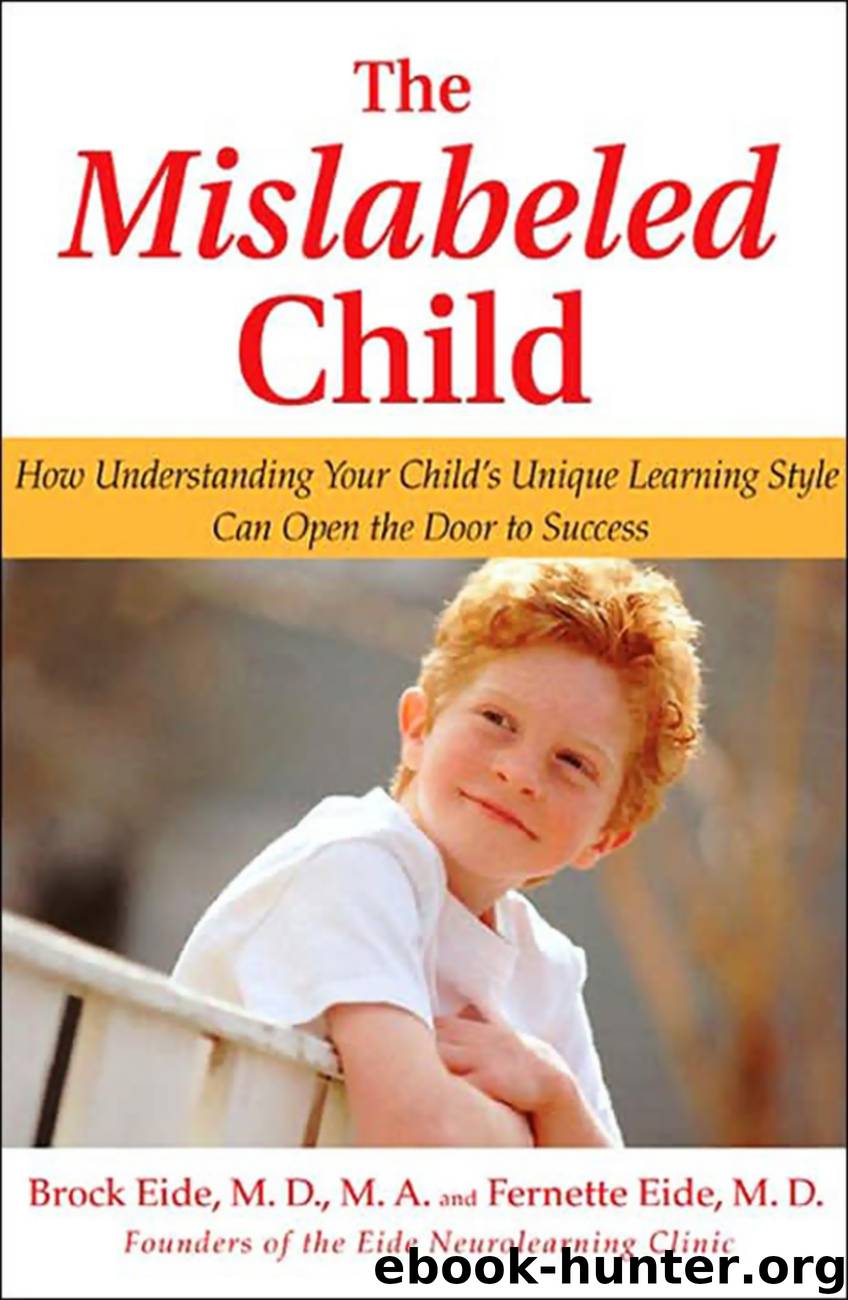The Mislabeled Child by Author

Author:Author
Language: eng
Format: epub
Published: 2019-04-14T16:00:00+00:00
Long-Term Word and Language Memory Patterns
Word and language patterns play a crucial role in the learning process. While multisensory learning should be the cornerstone of education, language-based instruction could be used more effectively than it often is.
First, children should be taught to use language-based memories to compensate for their difficulties with sensory-based memory. This compensatory use of language is known as verbal mediation. In verbal mediation, children who have difficulties memorizing sensory or motor patterns can compensate for their difficulties by memorizing verbal descriptions of these sensory or motor patterns, then “talking their way through” difficult situations or practices. For example, children with impairments in visual-spatial memory can use verbal descriptions to help them understand and remember things that most people remember visually, like the way from class to the restroom: “Turn right outside the door, then take the second hall to the left, then it’s the fourth door on the right.”
Second, all children should be taught to use language to enhance memory formation. Language can be used to elaborate (or form more memorable patterns for) essentially every kind of memory. Types of language patterns that can enhance memories are:
Specific definitions of words, facts, or events.
Verbal descriptions, including sensory or multimodal references (i.e., verbal mediation).
Synonyms or similar facts or events.
Antonyms or opposites.
Words with similar structures (based on word families or word roots).
Verbal mnemonic (memory) strategies, like acronyms (i.e., words that are formed from the first letters of a group of words, like MADD for “Mothers Against Drunk Driving”), rhymes, alliterations, and language usages that engage personal memory with personally interesting word associations, humor, absurdity, et cetera. We’ll discuss these strategies in our Helping section. An example of strategies that can be used to elaborate memory formation for the word great are shown in Figure 3.
Download
This site does not store any files on its server. We only index and link to content provided by other sites. Please contact the content providers to delete copyright contents if any and email us, we'll remove relevant links or contents immediately.
I Capture the Castle by Dodie Smith(2012)
The Heavy by Dara-Lynn Weiss(1790)
Aspergirls by Rudy Simone(1681)
Be Different by John Elder Robison(1624)
Autism's False Prophets by Paul A. Offit(1516)
My Child's Different by Elaine Halligan(1487)
Smart but Scattered—and Stalled by Richard Guare(1476)
101 Tips for the Parents of Boys with Autism by Ken Siri(1458)
What's Making Our Children Sick? by Michelle Perro(1401)
Asperger Syndrome (Autism Spectrum Disorder) and Long-Term Relationships by Ashley Stanford(1394)
ADHD by Mark Selikowitz(1374)
Girlish by Lara Lillibridge(1359)
On Immunity: An Inoculation by Biss Eula(1345)
Nerdy, Shy, and Socially Inappropriate by Cynthia Kim(1325)
An Adult with an Autism Diagnosis by Gillan Drew(1322)
Animal-assisted Interventions for Individuals with Autism by Temple Grandin(1301)
Sarah's Child (Hqn Romance) by Linda Howard(1292)
The Cities by K.A Knight(1285)
Seeing Ezra by Kerry Cohen(1282)
